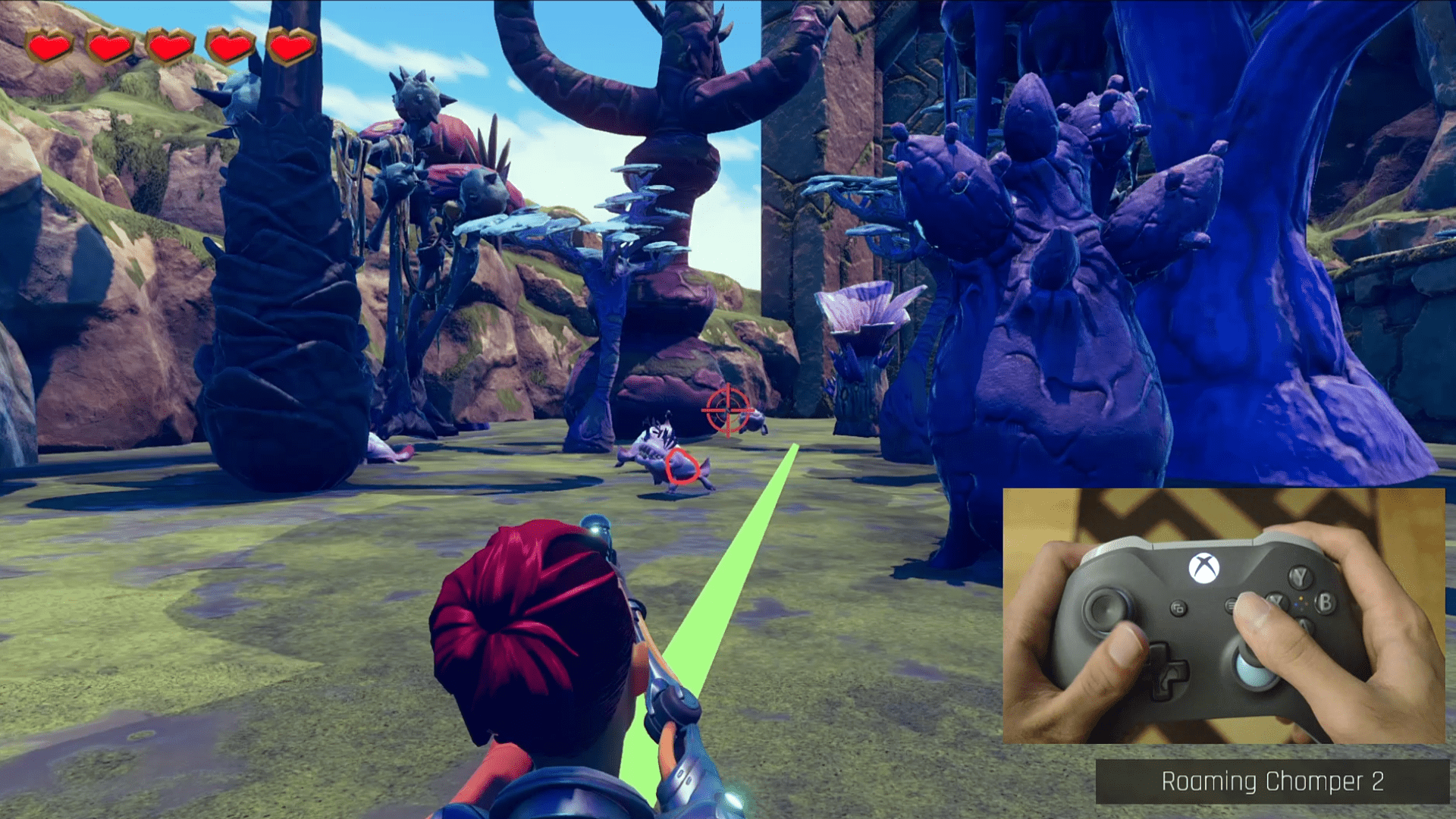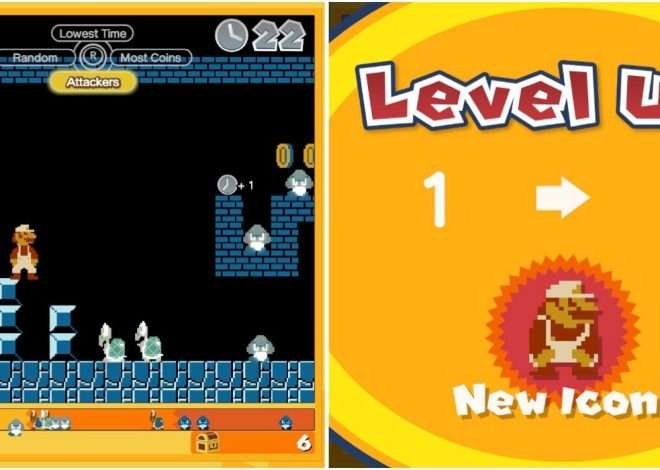
Leveling the Playing Field: A Deep Dive into Game Accessibility
The world of video games, once considered a niche hobby, has blossomed into a global entertainment phenomenon. Millions of individuals across diverse backgrounds and abilities engage with these interactive narratives, seeking enjoyment, challenge, and connection. However, the design of many games often inadvertently creates barriers for players with disabilities, preventing them from fully participating in this vibrant community. To truly understand what a truly accessible game embodies, we reached out to accessibility experts and game developers dedicated to inclusivity, gaining valuable insights into their perspectives and approaches.
Understanding the Landscape of Game Accessibility
Game accessibility encompasses the design and implementation of features that enable players with disabilities to experience and enjoy video games to the fullest extent possible. This goes beyond simply adding subtitles or adjustable difficulty settings. It involves considering a wide spectrum of needs, including visual impairments, auditory impairments, motor impairments, cognitive differences, and other challenges that can affect gameplay. Creating accessible games is not just about compliance; it’s about fostering inclusivity and expanding the audience that can appreciate the artistry and entertainment that games offer.
Why is Game Accessibility Important?
The importance of game accessibility extends far beyond ethical considerations. While the moral imperative to provide equal opportunities for all players is undeniable, there are also significant practical benefits to embracing inclusive design. By making games more accessible, developers can tap into a previously underserved market, increasing their potential player base and revenue. Furthermore, accessibility features often benefit all players, not just those with disabilities. Adjustable controls, customizable interfaces, and clear visual cues can enhance the experience for everyone, regardless of their individual abilities. Finally, prioritizing accessibility demonstrates a commitment to social responsibility, enhancing a developer’s reputation and fostering a more positive image within the gaming community.
The Spectrum of Disabilities and Their Impact on Gameplay
Understanding the diverse range of disabilities that can affect gameplay is crucial for designing truly accessible games. Here are some key areas to consider:
- Visual Impairments: This includes blindness, low vision, color blindness, and other conditions that affect a player’s ability to perceive visual information. Accessible solutions include screen readers, customizable color palettes, adjustable text sizes, and audio cues to convey important information.
- Auditory Impairments: This encompasses deafness, hearing loss, and other conditions that affect a player’s ability to perceive auditory information. Accessible solutions include subtitles, captions, visual cues to replace audio cues, and customizable audio settings.
- Motor Impairments: This includes conditions that affect a player’s mobility, dexterity, or coordination. Accessible solutions include remappable controls, customizable button layouts, simplified controls, alternative input devices (e.g., eye-tracking, switch controls), and adjustable game speed.
- Cognitive Differences: This includes conditions that affect a player’s cognitive abilities, such as attention, memory, and processing speed. Accessible solutions include clear and concise instructions, adjustable difficulty levels, customizable tutorials, visual aids, and simplified gameplay mechanics.
- Photosensitive Epilepsy: This condition is triggered by flashing lights or patterns. Games should include options to disable or reduce these effects.
Key Principles of Accessible Game Design
Designing accessible games requires a fundamental shift in perspective. Instead of focusing solely on the “average” player, developers must consider the needs of a diverse range of individuals with varying abilities. This involves incorporating accessibility considerations throughout the entire development process, from initial concept to final testing. Here are some key principles to guide accessible game design:
Flexibility and Customization
One of the most important principles of accessible game design is to provide players with as much flexibility and customization as possible. This allows individuals to tailor the game to their specific needs and preferences. Here are some examples:
- Remappable Controls: Allowing players to remap all game controls to different buttons or keys is essential for players with motor impairments.
- Adjustable Difficulty Levels: Providing a range of difficulty levels allows players to choose a level of challenge that is appropriate for their skill and abilities.
- Customizable Interface: Allowing players to customize the size, color, and position of interface elements can improve readability and usability.
- Adjustable Game Speed: Allowing players to slow down or speed up the game can make it easier to react to events and complete tasks.
Clear and Concise Communication
Effective communication is crucial for ensuring that players understand the game’s mechanics, objectives, and story. This is especially important for players with cognitive differences or visual/auditory impairments. Here are some strategies for clear and concise communication:
- Subtitles and Captions: Providing accurate and comprehensive subtitles and captions is essential for players with auditory impairments.
- Visual Cues: Using visual cues to supplement audio cues can help players with auditory impairments understand important information.
- Clear and Concise Instructions: Using clear and concise language in instructions and tutorials can help players with cognitive differences understand the game’s mechanics.
- Descriptive Audio: Providing descriptive audio that describes the visual elements of the game can help players with visual impairments understand what is happening on screen.
Intuitive and Consistent Design
An intuitive and consistent design can make a game easier to learn and play for all players, especially those with cognitive differences. This involves using consistent visual cues, control schemes, and interface elements throughout the game. Here are some tips for creating an intuitive and consistent design:
- Use Consistent Visual Cues: Use the same visual cues to represent the same actions or objects throughout the game.
- Use Consistent Control Schemes: Use the same control scheme for similar actions throughout the game.
- Use Consistent Interface Elements: Use the same interface elements for similar functions throughout the game.
Accessibility Features in Action: Examples from the Pros
Several game developers have already made significant strides in implementing accessibility features in their games. These examples demonstrate the practical application of the principles discussed above and provide inspiration for other developers looking to improve the accessibility of their games.
The Last of Us Part II: A Landmark in Accessibility
The Last of Us Part II is widely regarded as a landmark achievement in game accessibility. Naughty Dog, the game’s developer, worked closely with accessibility consultants and players with disabilities to identify and address potential barriers to gameplay. The game includes a wide range of accessibility features, including:
- Fully Customizable Controls: Players can remap all controls, including the touchpad and motion sensor.
- Text-to-Speech and Speech-to-Text: Players can use text-to-speech to have on-screen text read aloud and speech-to-text to communicate with other players in multiplayer.
- High Contrast Mode: Players can enable a high contrast mode that makes it easier to distinguish between different elements on the screen.
- Navigation Assistance: Players can enable navigation assistance that provides audio cues and visual prompts to help them find their way through the game world.
Forza Motorsport: Driving Accessibility Forward
The Forza Motorsport franchise has consistently prioritized accessibility, offering a variety of features to accommodate players with disabilities. Recent iterations have included:
- One-Touch Driving: This feature simplifies the controls, allowing players to steer, accelerate, and brake with a single button or input.
- Assisted Braking and Steering: These features provide assistance with braking and steering, making it easier for players with motor impairments to control their vehicles.
- Text-to-Speech and Screen Reader Support: Menus and other on-screen text can be read aloud, providing access for visually impaired players.
- Customizable HUD: The Heads-Up Display (HUD) can be customized to display only the information that is most relevant to the player.
Gears 5: Accessibility as a Core Design Principle
Gears 5 implemented a number of accessibility options designed to make the game more inclusive from the start. These features were not an afterthought but rather a core consideration during development.
- Full Controller Remapping: Every button on the controller can be remapped to suit individual needs.
- Subtitle Customization: Subtitles can be customized in terms of size, color, and background opacity.
- Aim Assist Options: Various aim assist options are available to help players with motor impairments aim and shoot.
- Narrator Support: The game’s menus and interface are fully narrated for visually impaired players.
The Future of Game Accessibility: Trends and Opportunities
The field of game accessibility is constantly evolving, with new technologies and approaches emerging all the time. Several trends are shaping the future of inclusive game design, creating opportunities for developers to create even more accessible and engaging experiences for all players.
The Rise of AI-Powered Accessibility Tools
Artificial intelligence (AI) is playing an increasingly important role in game accessibility. AI-powered tools can automate tasks such as generating subtitles, creating descriptive audio, and adapting gameplay to individual player needs. These tools have the potential to significantly reduce the cost and effort required to make games accessible.
The Growing Importance of User Testing
User testing with players with disabilities is essential for ensuring that accessibility features are effective and meet the needs of their target audience. Developers are increasingly recognizing the value of incorporating user feedback throughout the development process. This involves conducting playtests with players with disabilities, soliciting feedback on accessibility features, and iterating on designs based on user input.
The Expansion of Accessibility Guidelines and Standards
Several organizations are working to develop accessibility guidelines and standards for the game industry. These guidelines provide developers with a framework for designing accessible games and help to ensure that accessibility features are implemented consistently across different games. Examples include the Game Accessibility Guidelines (GAG) and the Web Content Accessibility Guidelines (WCAG).
Creating truly accessible games is not merely a matter of adding a few features after the fact; it requires a fundamental shift in perspective and a commitment to inclusive design. By embracing the principles of flexibility, clear communication, and intuitive design, developers can create games that are enjoyable and accessible to all players, regardless of their abilities. The examples of The Last of Us Part II, Forza Motorsport, and Gears 5 demonstrate that accessibility can be integrated seamlessly into even the most complex and visually stunning games. As technology advances and our understanding of accessibility deepens, the future of gaming promises to be more inclusive and engaging than ever before. The commitment to providing accessible games is an investment in a more diverse and vibrant gaming community. Let us continue to champion inclusivity, ensuring that the joy of gaming is shared by all.



